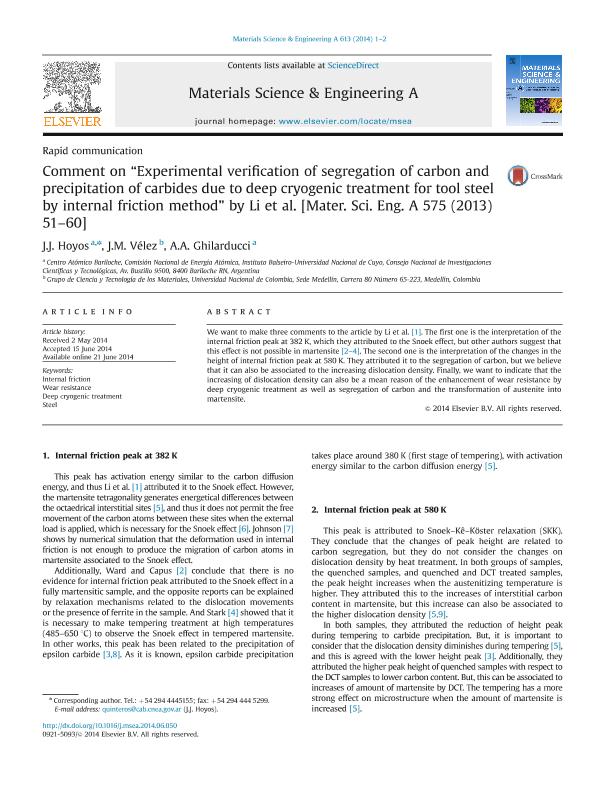Artículo
Comment on"Experimental verification of segregation of carbonand precipitation of carbides due to deep cryogenic treatment for tool steel by internal friction method" byLi et al.[Mater.Sci.Eng.A575(2013) 51-60]
Fecha de publicación:
06/2014
Editorial:
Elsevier Science Sa
Revista:
Materials Science and Engineering A: Structural Materials: Properties, Microstructure and Processing
ISSN:
0921-5093
Idioma:
Inglés
Tipo de recurso:
Artículo publicado
Clasificación temática:
Resumen
We want to make three comments to the article by Li et al. [1].The first one is the interpretation of the internal friction peak at 382 K, which they attributed to the Snoek effect, but other authors suggest that this effect is not possible in martensite [2–4]. The second one is the interpretation of the changes in the height of internal friction peak at 580 K. They attributed it to the segregation of carbon, but we believe that it can also be associated to the increasing dislocation density. Finally, we want to indicate that the increasing of dislocation density can also be a mean reason of the enhancement of wear resistance by deep cryogenic treatment as well as segregation of carbon and the transformation of austenite into martensite.
Palabras clave:
Internal Friction
,
Wear Resistance
,
Deep Cryogenic Treatment
,
Steel
Archivos asociados
Licencia
Identificadores
Colecciones
Articulos(CCT - PATAGONIA NORTE)
Articulos de CTRO.CIENTIFICO TECNOL.CONICET - PATAGONIA NORTE
Articulos de CTRO.CIENTIFICO TECNOL.CONICET - PATAGONIA NORTE
Citación
Hoyos Quintero, John Jairo; Velez, J.M.; Ghilarducci, Ada Albertina; Comment on"Experimental verification of segregation of carbonand precipitation of carbides due to deep cryogenic treatment for tool steel by internal friction method" byLi et al.[Mater.Sci.Eng.A575(2013) 51-60]; Elsevier Science Sa; Materials Science and Engineering A: Structural Materials: Properties, Microstructure and Processing; 613; 2014; 6-2014; 1-2
Compartir
Altmétricas




